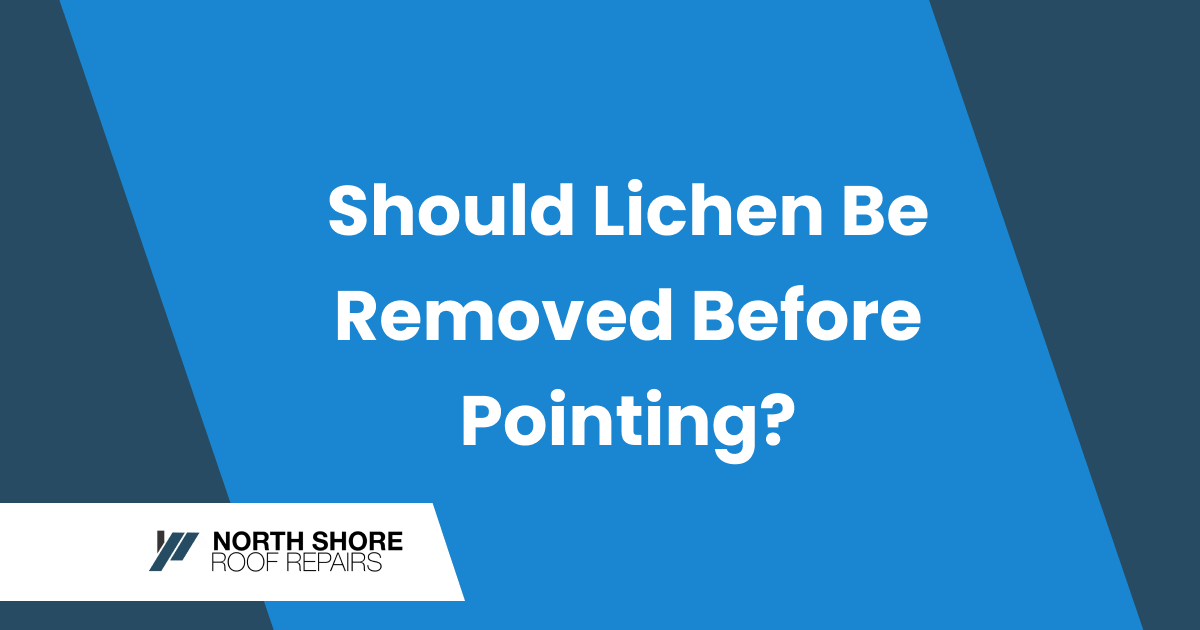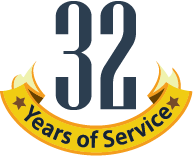
Yes, lichen must be removed before pointing. Dead lichen flakes away from roof surfaces, taking freshly applied pointing material with it and creating expensive rework within months. It usually isn’t necessary to clean the entire roof. We use a wire brush to clean the tiles that we’ll be working on.
Lichen is a Problem for Adhesion
Lichen creates a biological barrier between your roof surface and pointing mortar. These organisms grip tile surfaces. Some people like the appearance of lichen. It looks harmless, or even attractive on heritage roofs across the North Shore.
When lichen dies, it doesn’t simply disappear. The organism breaks down into flaky, powdery residue that separates from the tile surface. Fresh pointing applied over living or dying lichen bonds to this unstable layer rather than the solid tile beneath. Within months, entire sections of pointing work can fail as the lichen layer deteriorates and peels away.
Which Roof Tiles are Affected by Lichen
North Shore’s coastal climate creates perfect conditions for lichen colonisation. Terracotta tiles suffer more severely due to their porous clay texture. That provides plenty of lichen spore anchor points. Terracotta tiles retain moisture longer, this accelerates lichen and growth.
Concrete tiles also develop lichen problems, particularly on north-facing slopes. Their slightly textured surface create ideal conditions for lichen.
Salty air and morning moisture affect both tile types equally.
| Tile Type | Lichen Susceptibility | Primary Risk Factors and Growth Pattern |
|---|---|---|
| Terracotta | Very High | Porous clay texture, moisture retention, age-related weathering. Heavy colonisation on shaded areas spreads rapidly across entire tiles. |
| Concrete | High | Textured surface, mineral content, reduced UV reflection. Concentrated growth on north-facing slopes, slower but persistent spread. |
Moss frequently accompanies lichen growth on both terracotta and concrete surfaces, particularly in shaded roof valleys and areas with poor drainage.
Both organisms share similar removal requirements and pose identical threats to pointing adhesion.
The combination creates thick biological mats that completely compromise surface preparation for quality pointing work.
Professional Cleaning Versus Roof Repair
Roof tilers focus on structural integrity and waterproofing, not biological cleaning. This separation of trades ensures each job receives proper attention and expertise. We clean the tiles that we’ll be working on with a wire brush.
Professional roof cleaners use targeted scrubbing methods and approved treatments to eliminate lichen over the entire roofing area. This isn’t needed for your bedding and pointing work to go ahead, but you can opt in to a full roof clean before going ahead with a pointing job if you prefer. All surfaces must be fully dried before any pointing begins.
Some contractors attempt to combine roof cleaning and pointing services, but this approach typically delivers substandard results in both areas. Quality pointing requires meticulously clean surfaces and optimal working conditions.
Lichen Removal Process
Dry scrubbing removes the bulk of organic material without introducing excessive moisture into roof cavities. We dry scrub using a wire brush and this is effective for the tiles that we’re working on.
Surfaces must dry completely between cleaning and pointing stages, so if you do get a professional roof cleaner before our arrival, coordinate the timing so that the surface is dry before we being the pointing work, for optimal conditions.
Surface inspection after cleaning reveals the true condition of terracotta tiles and identifies any damage requiring repair before pointing begins.
Maintenance Strategy
Clean terracotta and concrete tile surfaces accept pointing mortar with maximum adhesion strength, creating durable weatherproof seals that protect your roof structure for years. Regular maintenance inspections identify early lichen growth before colonies establish enough grip to cause a problem.
We recommend assessments are done during autumn to allow identification and planning for coordinated cleaning and pointing schedules. Pointing failure exposes roof timbers to weather damage so being proactive can save you money in the long run.
Ready to protect your roof? Contact us or call 1300 764 456 for expert roof assessment and roof pointing.

Metal Roof Repair
Cement Roof Tiles
Ridge Recementing
Ridge Capping Repair
Roof Recementing

